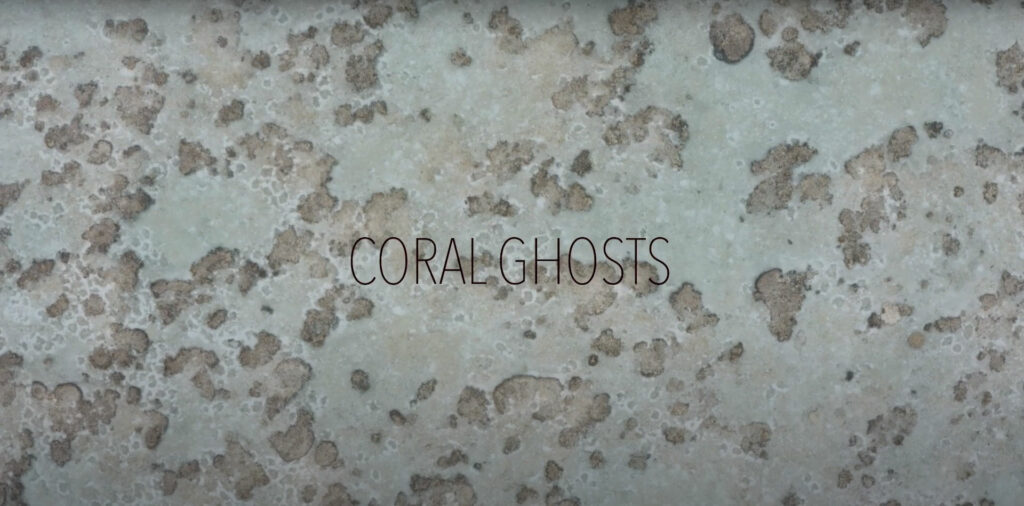
Documentary film Coral Ghosts reveals the destruction of reefs over the last 60 years
via Take Action Films
Toronto – For more than half a century, the world’s coral reefs have been steadily dying from pollution, development, and climate change.
Coral Ghosts is the story of marine biologist Dr. Tom Goreau, whose life-long passion is to save corals, while on a mission to preserve his family archive of more than 7,000 photographs.
Many of these photos show how reefs have been destroyed over the last 60 years and are some of the world’s first underwater pictures of corals dating back to the 1940s.
The 90-minute documentary directed by Andrew Nisker, was a year-long journey that took the filmmaker to the far regions of the planet. Filmed on location in the Canadian Arctic, Great Barrier Reef, Jamaica, Indonesia and the Bikini Atoll.
Coral Ghosts world premiere will take place at the 2020 Planet in Focus Environmental Film Festival Oct. 14-18.
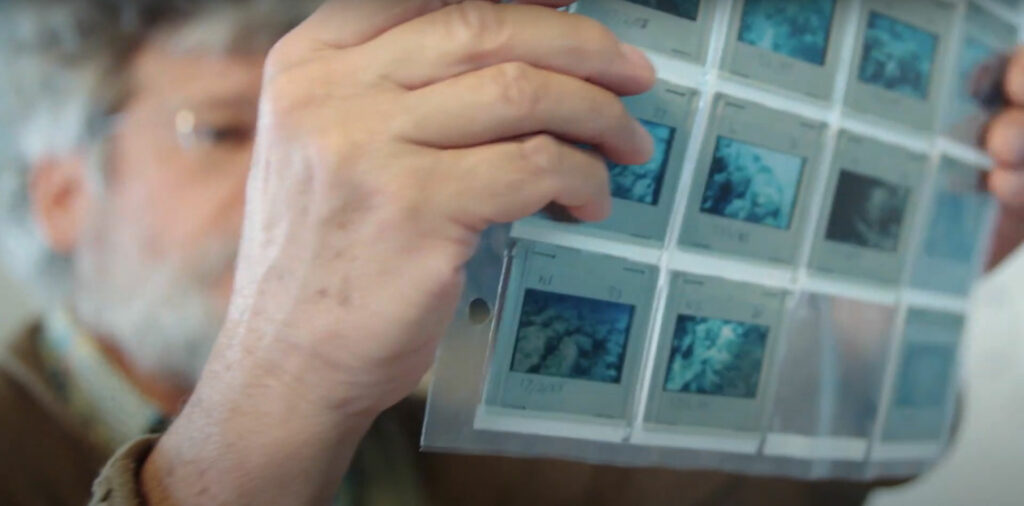
These photographs, taken mainly by his father and grandfather, are perhaps the only scientific evidence we have of how rich and diverse these environments once were. Today they sit in hundreds of dusty boxes at Goreau’s home in Boston waiting to be digitized.
“These pictures are the only record of a lost world,” said Goreau. “It’s an important job for me to preserve this. Now, it’s a very sad landscape and the reefs are almost all dead. Global warming is causing bleaching as never before, and people aren’t even aware of it. These are ghost reefs.”
Goreau’s grandfather Fritz, a photographer for Life Magazine, started taking pictures of coral reefs around the Bikini Atoll after the atomic bomb testing in 1946.
Life Magazine named Fritz, photographer of the Century for his pioneering work in the new field of macro photography. The movie poster for 2001: A Space Odyssey was inspired by Fritz’s work.
His father and grandfather both had an interest in photography, and felt it was the best way to communicate science to the masses. They took pictures in diverse scientific fields from microscopic fossils to moon rocks.
They were even the first to use a technique with polarized light to enhance details of microscopic objects. They also developed some of the first underwater camera systems.
“My father and grandfather wanted science to be visual,” said Goreau.
Goreau’s family’s pictures reveal a diverse reef system surrounding Jamaica in the 1950s. Now, the reefs are nearly gone. As we see in the film, coral reefs around the world today are nothing like they once were when compared to Goreau’s family pictures.
Coral reefs all around the world, including the Great Barrier Reef, are dying, which can lead to shoreline and economic loss. As a consequence, communities are spending huge amounts of money protecting shorelines with cement blocks and boulders.
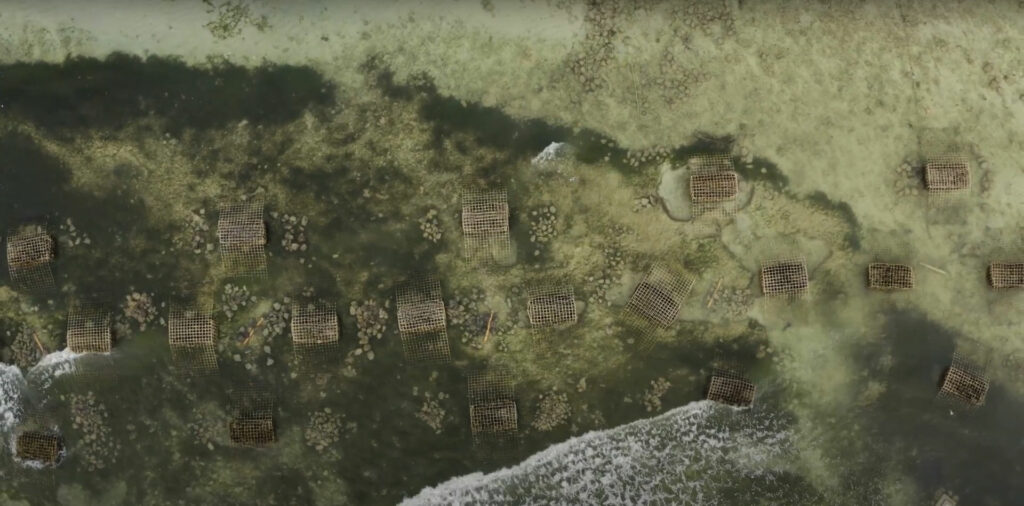
While in Indonesia, Goreau shows how reefs can act as natural wave barriers, protecting the shoreline from erosion at only a tenth of the cost of cement blocks. Coral reef loss is also affecting local fishing and tourism.
Goreau points out, coral reefs are important ecosystems, like the rainforests and home to a quarter of the world’s marine life. Some coral reefs take thousands of years to grow and now are just skeletons at the bottom of the ocean.
“All we can do is preserve it,” said Goreau.
It turns out that electricity is very good for coral reefs. It re-energizes their biological energy. In 2000, Goreau started a reef restoration project in Bali, Indonesia with a process called biorock. Now, there are more than 150 restored coral reefs, and the local economy has benefited from increased tourism.
The film shows him being joined by local groups in Indonesia, while creating an artificial reef. They tie small pieces of coral to metal cages that are energized with a small electric current. This current stimulates coral growth.
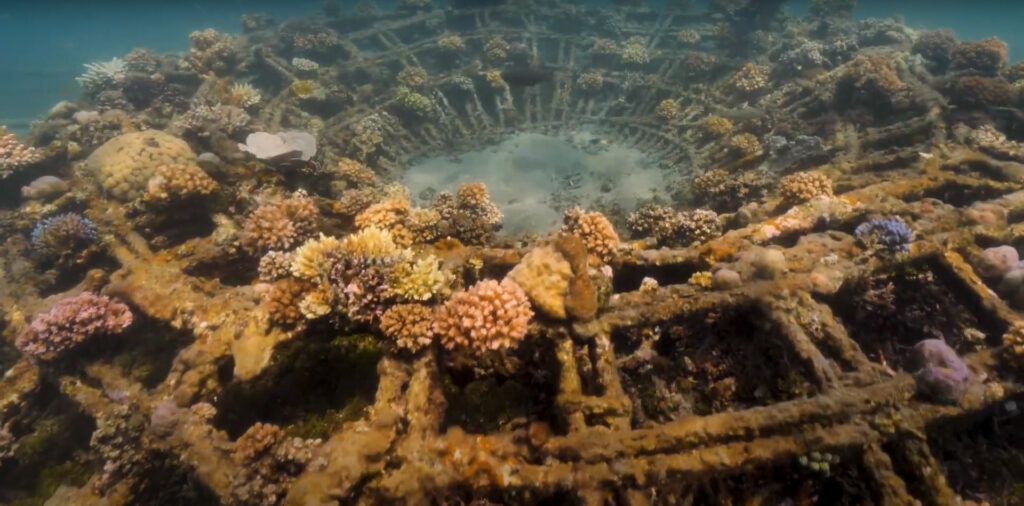
“What we’re doing is really symbolic because for every coral we grow, a million are dying. Most have already died from high temperatures. In the long-run we can’t save reefs without saving the planet,” said Goreau.
Coral Ghosts was produced by Take Action Films in conjunction with the Documentary Channel. It will premiere on the Documentary Channel in the spring of 2021. Coral Ghosts was supported by Rogers Documentary Fund, Rogers Telefund, Ontario Creates and the Canadian Media Fund.
Take Action Films is an award-winning film studio that produces social-impact documentaries. Its films have appeared on Netflix, CBC, TVO, Sundance Channel and dozens of other outlets and well-known film festivals. It’s films are also available for streaming at takeactionfilms.com. Coral Ghosts will be available for streaming after it has appeared on the Documentary Channel.
Watch A Preview Now:
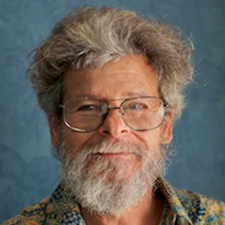





Everybody keeps saying global warming is killing Coral’s around the world when are they going to really admit that mankind is causing Global warming so mankind is responsible for killing the coral reefs and raping the oceans
Hey Tom. Is has been admitted and people (scientists, conservationists, concerned citizens) continue to strongly admit that humans are to blame. The problem is not the admission, it is the listening and the lack of response from elected officials. Some of which impede progress by being champions of misinformation and denial, while they fail to recognize that ecosystem services outperform any country’s GDP. Countries are so fixated on their economy at all costs that actions and policies are short term with little reflection of the long term impact of these plans on the planet. The solution is to elect the right individuals (preferably scientists or politicians that respect science, research, and facts) to positions of power and hold them accountable! You have a chance to do that this coming Nov 3, 2020.